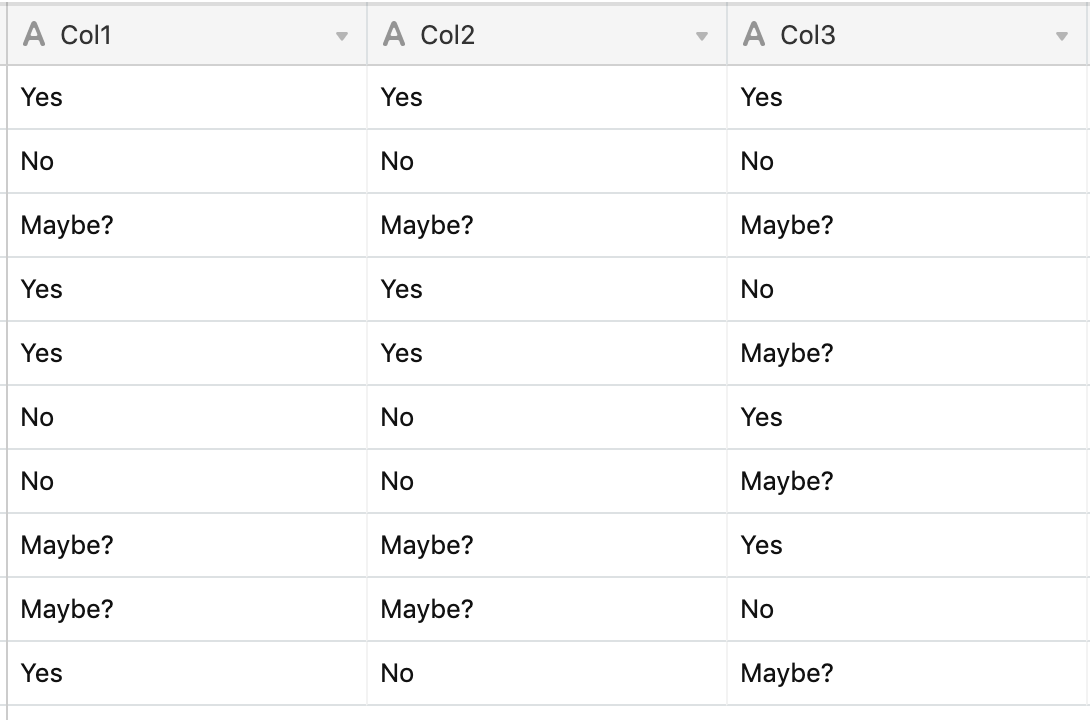I have 3 separate fields and I want the 4th field to show a result based on the 3.
The responses can be yes, no, maybe
If at least 2 of the 3 columns are YES, then result should be YES
If at least 2 of the 3 columns are NO, then result should be NO
If at least 2 of the 3 columns are MAYBE, then the result should be MAYBE
If each column has one response of each, then the result should be MAYBE
I am new to Airtable and am more familiar with Excel, so a simple formula or guidance would be helpful. My current Excel has a long formula of nested IF and COUNTIF. Are there equivalents of those on here?









